How to install Backyard Drainage / French Drain
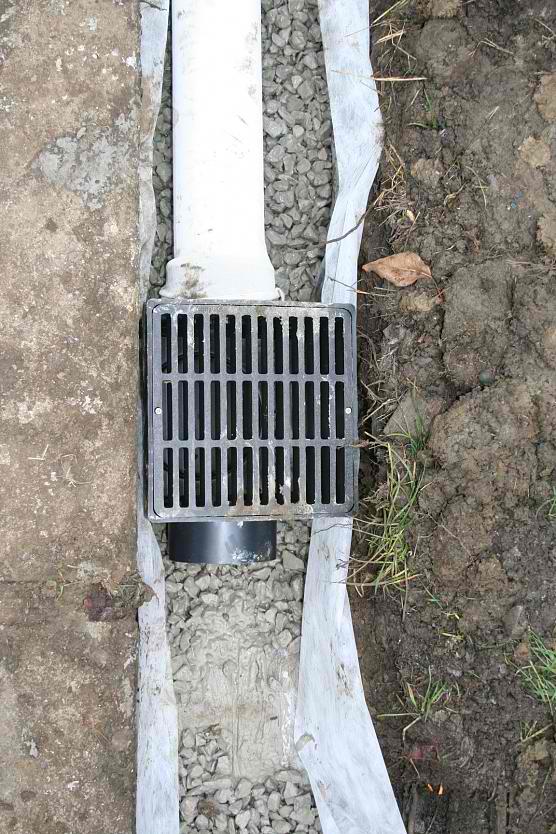
With all the recent rain, we discovered that there are some drainage issues on our property, so we’ve decided to do something about it.
This website has lots of good info about designing a drainage system and we’re following most of the advice they offer.
We’re using rigid PVC pipe instead of corrugated so that it can be roto-rooter’ed down the road if necessary.
The digging is definitely the most difficult or expensive if you’re paying someone to do it as we have.
Home depot carries all of the pipes, catch basins, and fittings needed to complete the system – we’ll end up spending around $1,000 for the whole system which includes:
– 3 yards of drainage gravel
– 200′ of 4″ PVC pipe (perforated and solid)
– 15 pipe fittings
– 8 catch basins
– landscape fabric
– pipe sleeve fabric
– digging labor cost
Our system will utilize a French Drain to move water out of the soggy areas and downspout connections to keep it away from our foundation.
We have rain chains that feed into catch basins as well.
I’ll post pictures when I get a chance.
We’d love to hear from anybody who has drainage experience or pictures to share.
Why is drainage important?
Good question.
Answer:
Eichlers are built upon a cement slab.
1. Poor drainage can often leave water in contact with your slab for prolonged periods of time.
2. Cement is porous and acts like a candle wick when exposed to water, drawing moisture up into it, and ultimately into contact with the wooden structure. When wood is exposed to water over a prolonged period of time, dry rot is inevitable. Dry rot makes wood very weak like paper that can be crushed w/ your fingers.
3. A slab that absorbs water and then drys out, can also be prone to cracking which can cause your radiant heat pipes to leak.
4. Water can cause the foundation of your home to sink – which can lead to all sorts of structural problems.
The goal is to keep your foundation and slab nice and dry, and therefore, your home structurally sound.
Please chime in if you have corrections or more to add.
Update: All the rain we’ve had recently has been a great test of our new drainage system. It has made a huge difference in keeping the water from ponding in our yard and around our foundation.
Attached are the pictures I took during it’s installation.
I set up a french drain – (I think our approach is actually called a curtain drain) – across the slope in our back yard.
We are at the bottom of the hill in our area, so we pick up excess groundwater from our neighbors’ properties and our yard get’s pretty saturated after heavy rains. The french drain gives the water in our yard an escape route.
I also installed a catch basin at a low point where water used to pond.
Here you see the ditch lined w/ landscape fabric, filled w/ gravel, then the perforated pipe is sleeved with a mesh sock and then covered with gravel, holes down. Fabric goes over the gravel, and then dirt (sand is better) on top of that.
I can tell that the french drain is working because water keeps draining out of the yard long after the rain has stopped.
Also attched are some pictures of my temporary rain chains feeding into 9″ catch basins that tie into the un-perforated section of drainage pipe. The chains will be replaced w/ copper ones eventually.
Also pictured is one of the roof downspout connections. I plan to add a leaf-separator system at some point to prevent roof debris from clogging the drain pipes.
I added vertical access points near where my underground drain pipe makes a 90 degree turn so that I can roto-rooter more easily if clogging ever occurs. The turn was necessary for sufficient down-hill grade. I did the same thing at the end of the system just before the exit point since my exit is buried in gravel.
A couple useful things I learned during this project:
1. Start at the exit/lowest point and work up-hill to ensure that you don’t end up digging deeper than what your lowest point can support.
2. Digging dry dirt is much easier than mud.
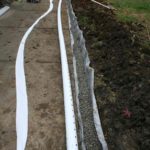
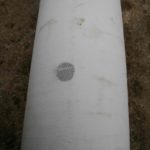
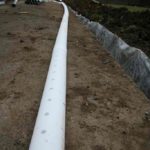
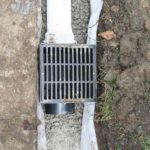
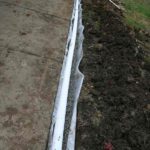
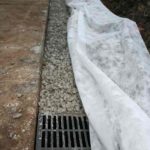
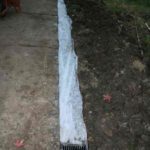
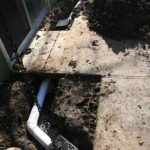
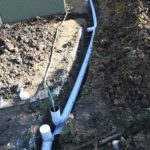
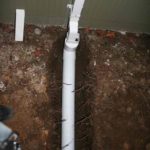

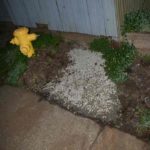
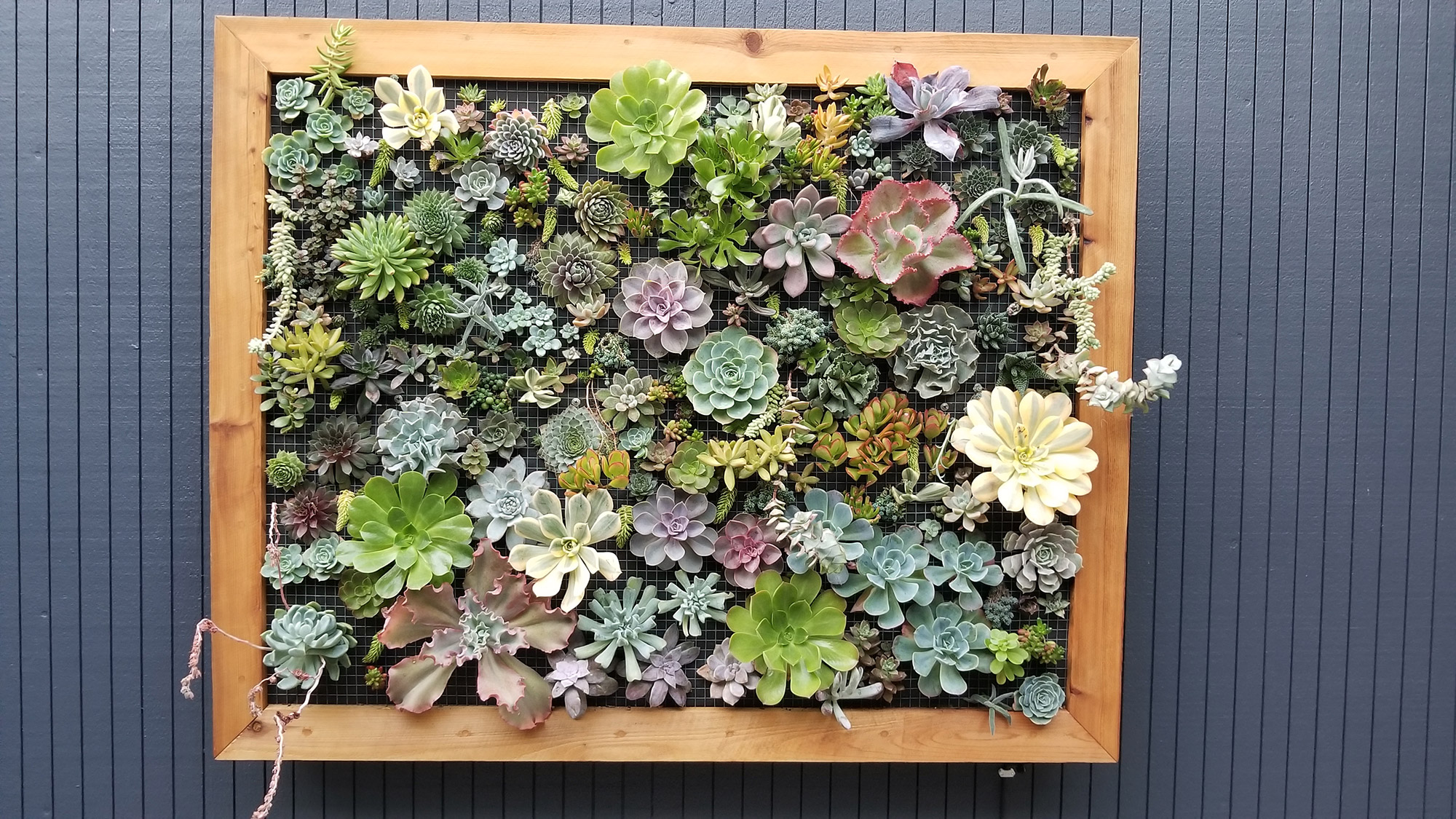
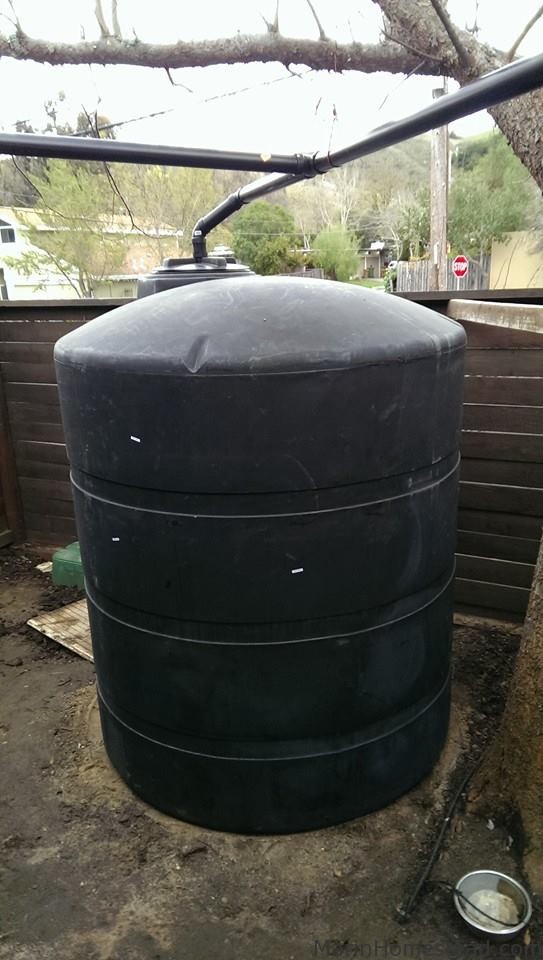
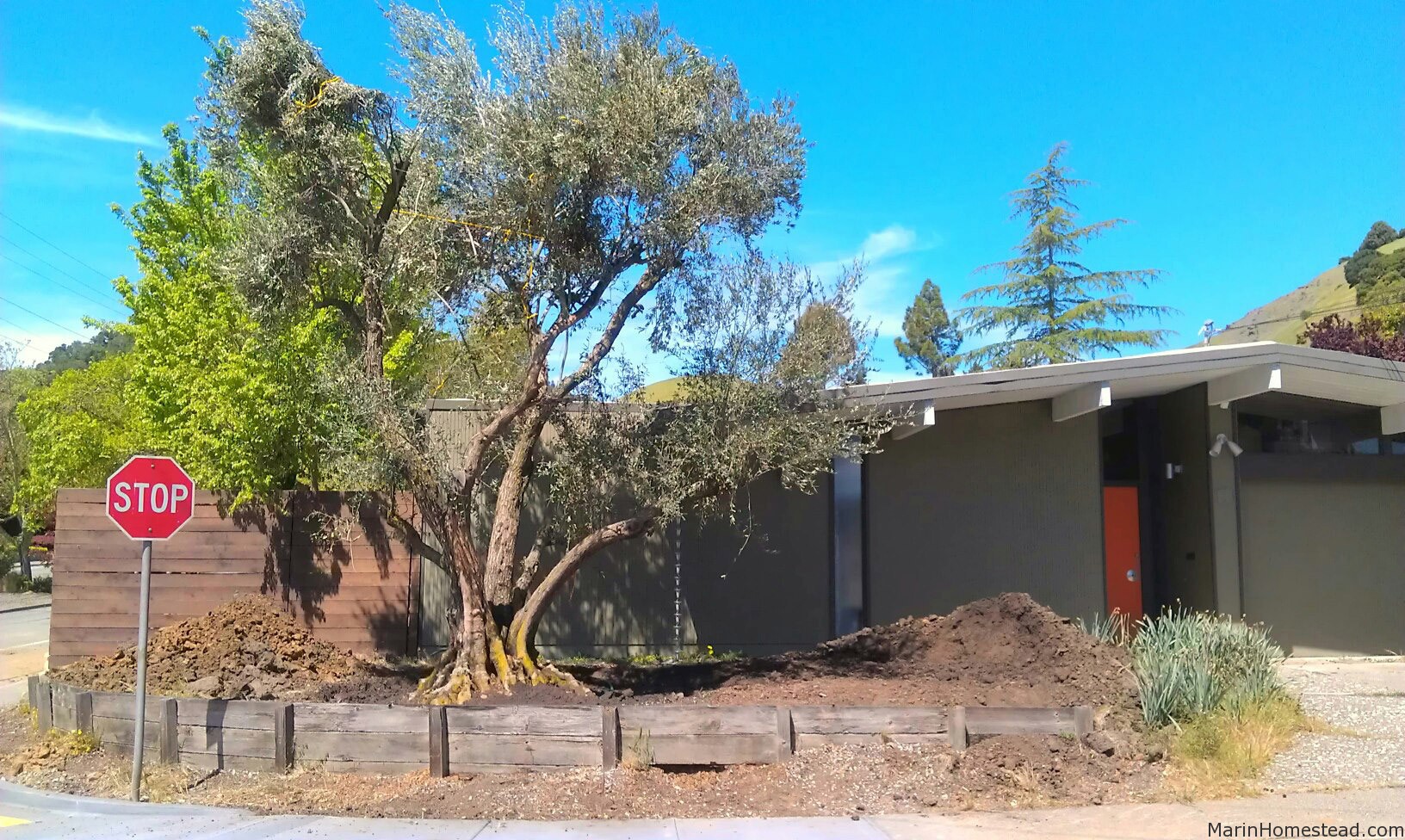
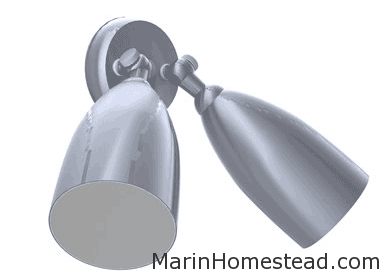
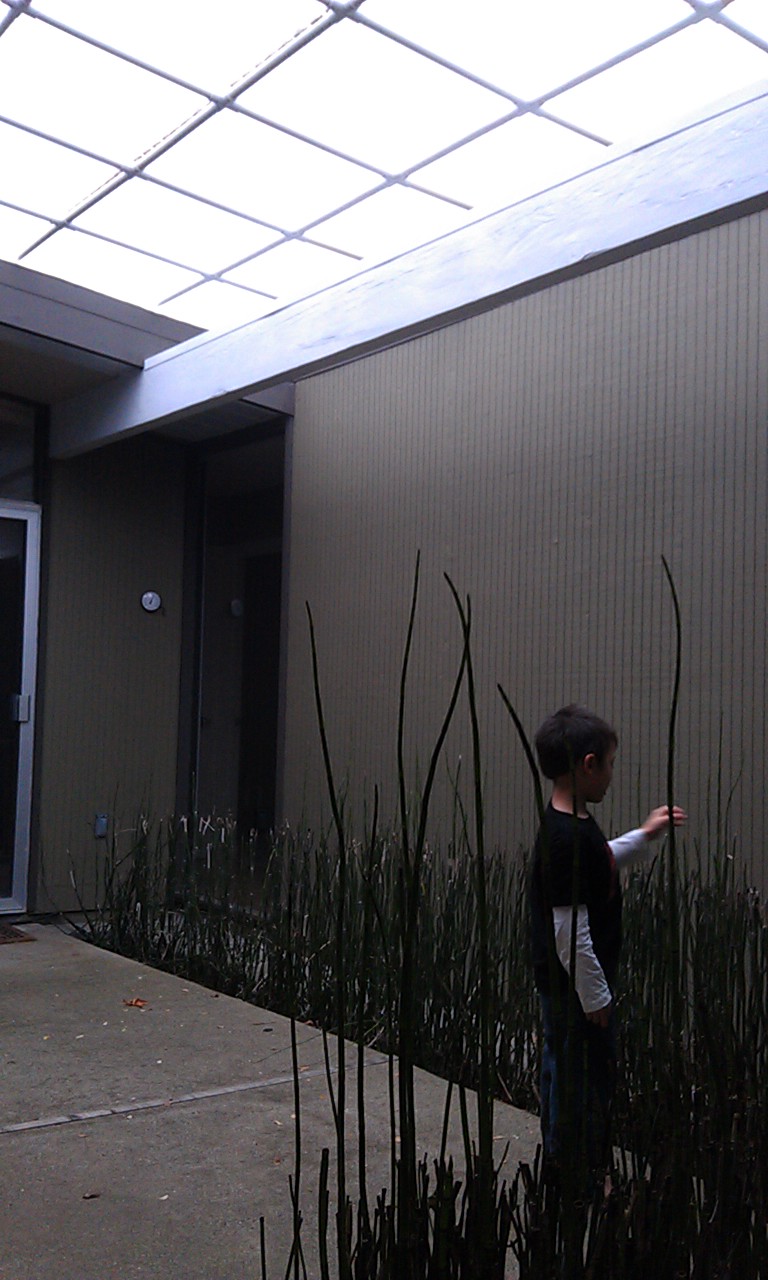
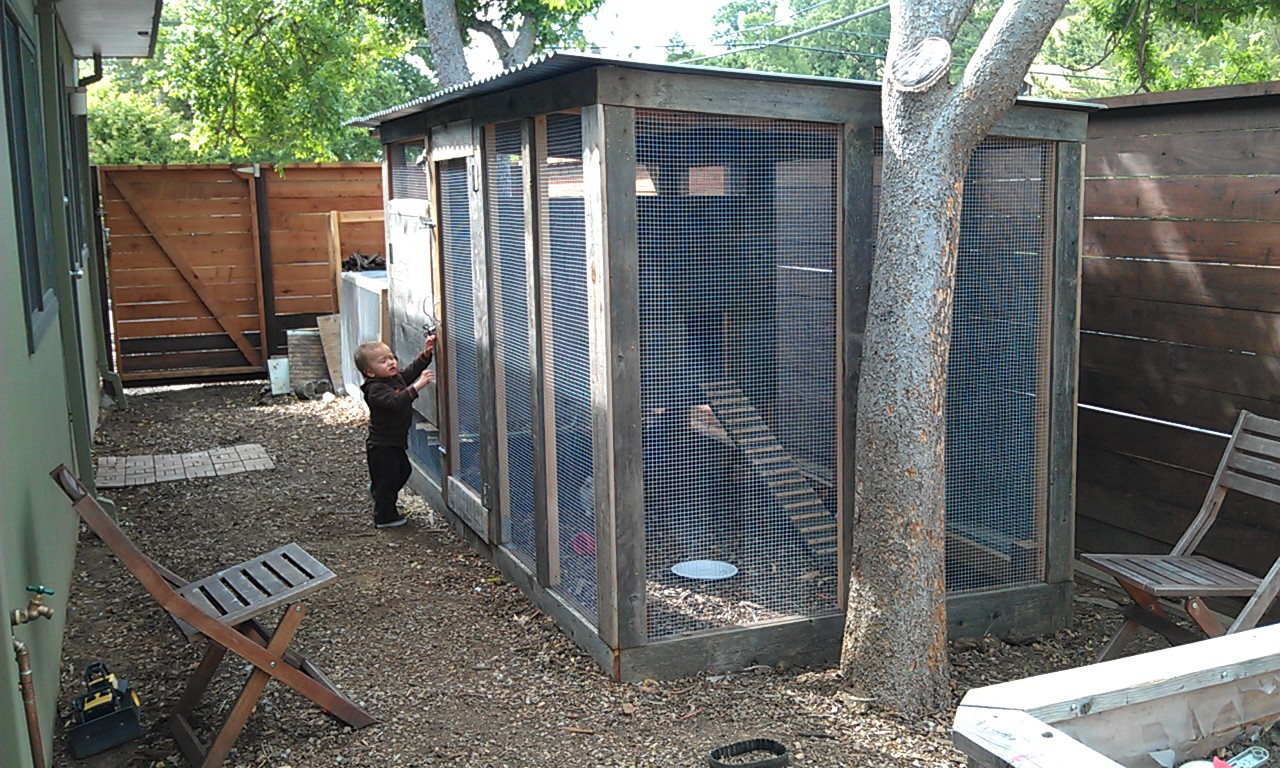
how can you clean out the dirts (may be mud) on the perforated pipe or the fabric to refresh it after a long time working?
I think the best thing you can do is use washed drainage gravel to surround your fabric covered pipe. I can’t imagine any way to prevent gradual decrease in performance over time, but if you put in a nice big ditch of gravel with a large perforated, fabric covered, pipe, then you should be in good shape for a very very long time.
come to think of it.. tree roots are probably a bigger concern..
I have a building,the basement one is car parcking,I must have a trench drain at the end of the ramp where the cars enter the basement.so rain water with may be dirts flow to the basement and cause cloging the trench pipe,what is your recommendation,and how the trench can be cleaned if french drain is used?
I’m glad that you mentioned the importance of good drainage. Having water leak into your foundation is a very serious problem, and like you said, could cause the wooden structures within to break over time. My father has been neglecting the drainage on his property for sometime, I’ll go over the points in your article with him and with any luck I can convince him to get all the french drains and plumbing on his property looked at soon.